8.4 /10 1 Votes
8/10 IGN Producer(s) Ryutaro Ichimura | 87% GameFAQs 87% Metacritic Initial release date 11 July 2009 Series Dragon Quest | |||||||||||||||||||||||||||||||||
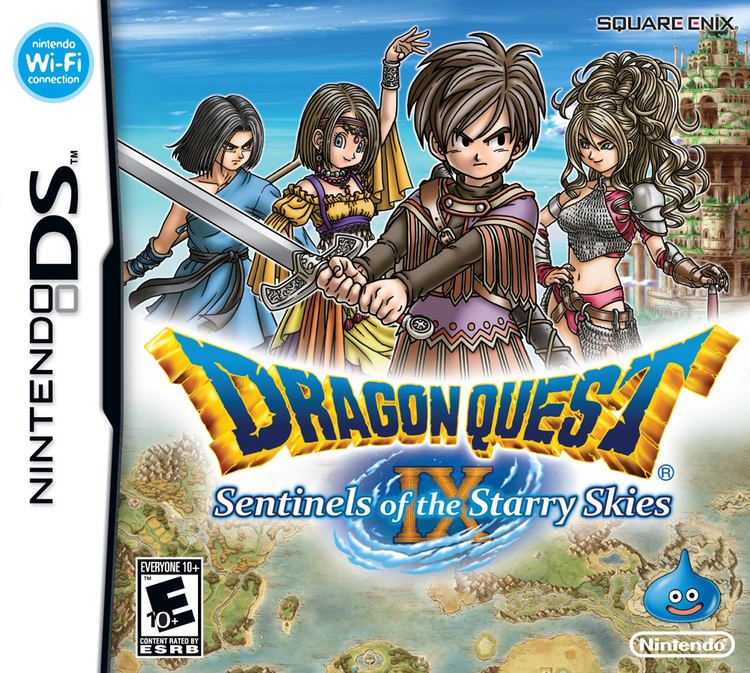 | ||||||||||||||||||||||||||||||||||
Director(s) Akihiro HinoJin Fujisawa Designer(s) Yuji HoriiAkihiro Hino Writer(s) Yuji HoriiFuminori IshikawaTakeshi UchikawaKenjiro MoriMisato Zenba Similar Dragon Quest games, Square Enix Holdings games, Role-playing games | ||||||||||||||||||||||||||||||||||
Dragon quest ix sentinels of the starry skies ds review
Dragon Quest IX: Sentinels of the Starry Skies is a role-playing video game for the Nintendo DS. It was developed by Level-5, and published in 2009 by Square Enix in Japan; it was published by Nintendo in North America and PAL regions a year later, in 2010, making it the second numbered installment of the series to be released within Europe and Australia, after Dragon Quest VIII: Journey of the Cursed King.
Contents
- Dragon quest ix sentinels of the starry skies ds review
- Dragon quest ix sentinels of the starry skies u s trailer video english
- Gameplay
- Battle
- Features
- Story
- Development
- Release
- Japan
- North America and Europe
- Reception
- Awards
- Cultural impact
- References
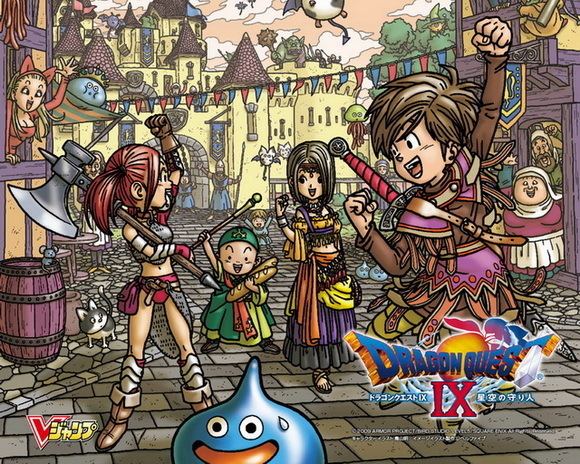
Dragon Quest IX introduced local multiplayer functionality to the series, as well as limited compatibility with Nintendo Wi-Fi Connection. It was also the first to be initially released for a handheld game console, and the first to feature spawning of enemies, rather than random encounters. The game retains many of the series' traditional role-playing elements, however, such as turn-based combat and a level system based on gaining experience points. The game was designed to be the most difficult title in the series.
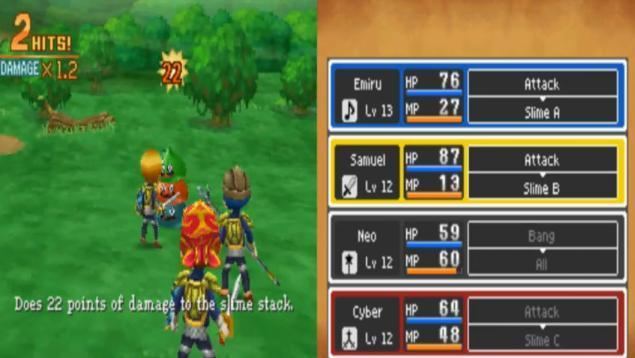
Dragon Quest IX achieved record-breaking sales within Japan, and has set a Guinness World Record for its anonymous communication mode. Critically, the game has been well-received both inside and outside Japan, with a Famitsu score of 40/40, a GameRankings score of 88%, and a Metacritic score of 87.

Dragon quest ix sentinels of the starry skies u s trailer video english
Gameplay

Dragon Quest IX continues the Dragon Quest tradition of turn-based combat and is considered harder than the other Dragon Quest games before it. The game allows players to have a cooperative wireless multi-player experience with up to four players; it does not, however, feature multi-player capabilities via Nintendo Wi-Fi. Multiplayer play requires a game cartridge for each player. The game includes only one save slot, whereas most have at least three.
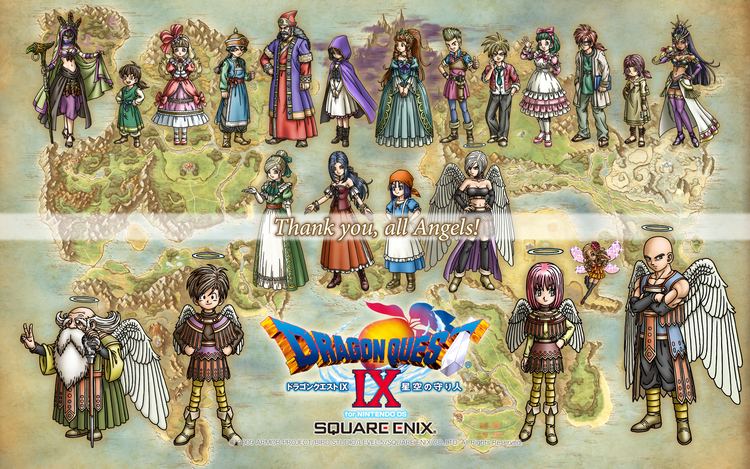
In part due to Dragon Quest IX's design as a multiplayer game, party members are characters created and chosen by the player. Unlike previous games, the player has more control over their character's appearance. While Dragon Warrior III and Dragon Quest IV: Chapters of the Chosen allowed players to choose between playing a hero or a heroine, Dragon Quest IX offers more customization by also allowing players to define themselves with characteristics such as hair styles and skin tones.
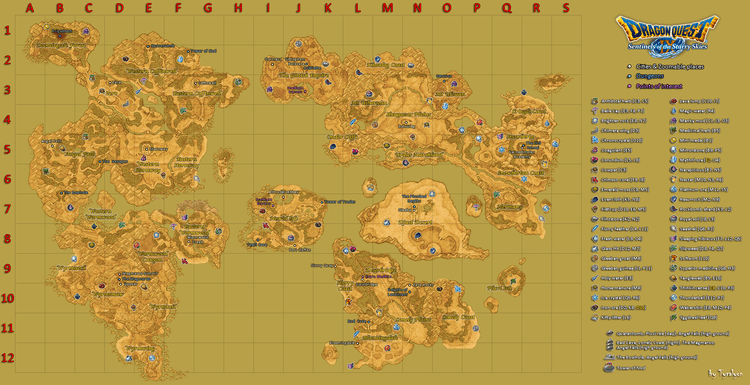
Each character can be customized, both during creation and throughout the game. During character creation selectable features include, gender, hair style and color, eye shape and color, body type, skin tone, and, for characters other than the protagonist, vocation (the game's term for character class). Customizing a character continues into the main game with weapons and armor, now visible during battles and while exploring the world map and towns. Weapons and armor equippable include one weapon, a shield, a helmet, body armor, leg armor, gloves, boots, and accessories (rings or amulets, for example).
Each playable character has a vocation that determines his or her stat(which increases per level), usable weapons and armor, and spells. Six vocations are available early in the game: warrior, mage, priest, martial artist, thief and minstrel. An additional six classes (armamentalist, ranger, gladiator, sage, paladin, and luminary) can be unlocked through successful completion of quests. The protagonist starts as a minstrel, and when additional party members first become available, they can be created with any of the six starting vocations. To have a character become a different vocation the player must talk to "Jack of Alltrades" of Alltrades Abbey or use the sage's ability "Jack's Knack". The ability to change a character's active vocation can be unlocked through gameplay. Characters have separate levels and experience totals for each vocation, and a character's stats and spells are based on his or her active vocation. The game also includes a skill system similar to the one in Dragon Quest VIII, each vocation has five skills: one skill exclusive to the vocation, three weapon skills shared with one or more other vocations, and either Shield or Fisticuffs, an unarmed skill. As characters gain levels, they obtain skill points, which can be spent to increase any of the current vocation's skills. Whenever the points invested in a skill reach a certain threshold, a new ability (active command) or trait (passive bonus) is gained, with the 10th and final ability or trait gained at 100 points. In the case of weapon skills, the 100 point trait allows a character to use the relevant weapon with any vocation, while the 100 point shield trait allows any vocation to use shields. Abilities and trait which have been gained through the skill system are carried over to other vocations, as are unspent skill points.
Battle
Battle is conducted from a combination of first and third-person perspectives. The character plans his or her attack from a first person perspective, selecting which opponents to target (including the ability to target specific monsters in a single group) and then switches to a moving third-person view to watch the main character's party and the monsters battle for the round. Combat includes a combo system available both to players and monsters. When two or more identical attacks are performed consecutively on the same opponent the attack damage increases by a multiplier. A two-hit combo receives a 1.1x multiplier (1.2x in the NA and UK version), a three-hit combo a 1.5x multiplier, and a four-hit combo a 2.0x multiplier. Experience points earned from battle are divided amongst all party members based on level; higher level characters receive a greater share of the experience points than lower level characters. Characters who are killed during a battle still receive some experience as well, depending on how much of the battle they remained alive for. The tension system from Dragon Quest VIII makes a return, allowing characters to store up power to increase the potency of the next attack or spell. Also, some monsters will be provoked when certain actions are performed: provoked enemies will focus their attacks on the offending party member, which could be a problem if one character ends up provoking many enemies in one action as they run a great risk of being targeted by a combo.
The protagonist's actions are controlled directly by the player, while other party members can either be controlled directly or assigned various AI modes such as Show No Mercy (which prioritizes damage), Focus on Healing or Don't Use MP using the Tactics system first introduced in Dragon Quest IV.
Features
Dragon Quest IX gives the player optional quests to complete during and after the main game. Quests serve as side-stories helping non-player characters around the game's world. Multiple quests can be performed simultaneously; some are interlocking, others unlock stages in fellow quests. Early quests include gathering magical spring water, slaying monsters and stealing for a fellow thief. Unlike previous Dragon Quest installments, Dragon Quest IX contains many open ended mini-quests. Upon completion of the quests, a "Quest List log", serving as an in-game achievement list.
In addition, the game features infinitely generating treasure maps where the player can earn treasure and fight monsters not found in the main game. New weapons, armor, and other items can be created through alchemy. Using an alchemy pot (called the "Krak Pot"), one can mix items with alchemy materials found in treasure chests, the world map, and dropped by monsters. Recipes can be found hidden in bookcases through the world and the player can experiment with new recipes of their own.
Story
Dragon Quest IX begins in the Observatory, the kingdom in the sky where the angelic beings called Celestrians, including the main character, reside. The main character begins as the guardian who has just undertaken protection of Angel Falls, a human village. The Celestrians have been trying for some time to move into the Realm of the Almighty. However, before they can leave, they require a rare fruit called the Fygg. Yggdrasil, the "World Tree" that it grows on, must be empowered with benevolessence, spiritual energy that can only be obtained by helping people in the Protectorate, the world of mortals.
By protecting Angel Falls and earning the gratitude of its people, the main character obtains enough benevolence for the World Tree to produce the fyggs. As the tree blooms, the celestial train known as the Starflight Express arrives to ferry the Celestrians to the Realm of the Almighty. However, before the Celestrians can board the train, the Observatory is attacked from below by a mysterious and powerful force. The force scatters the assembled angels and knocks the fyggs, the Starflight Express, and the main character down to the Protectorate.
The main character awakens without wings or a halo and finds himself/herself rescued from the base of the waterfall in Angel Falls. He/She comes to learn a little about his/her fall on the great earthquake that happened at the same time. Having lost most of his/her Celestrian powers, but not his/her memory or the ability to see deceased and magical spirits, he/she travels about trying to find a way back to the Observatory. During an adventure to reconnect his/her village to the nearby castle after landslides caused by the great earthquake, the main character finds the broken-down Starflight Express and its fairy engineer, Stella. Stella promises to help the main character return to the Observatory if he/she can prove he/she is a Celestrian.
By helping humans, the main character gathers benevolessence, though he/she can no longer see it. His/her ability to aid and protect the humans convinces Stella that he/she is indeed a Celestrian. The main character then uses the benevolessence to restore power to the Starflight Express and returns to the Observatory. Upon his/her return, the main character discovers that the fyggs have also fallen to the Protectorate and that many Celestrians have been dispatched to find them, though none of them have returned. His/her prayers to become a Celestrian again are unanswered, but a vision is presented to the main character as he/she stands before the World Tree. Taking the vision as a sign, the main character returns to the Protectorate to help collect the Fyggs.
As the main character travels the Protectorate in search of the fyggs, he/she finds out that fyggs have the ability to grant those who eat it any wish. Unfortunately, the wishes are not always fulfilled in the way they were expected and those who eat the fruit succumb to strange and demented ways. The main character travels from land to land and battles those possessed by the Fygg's power, freeing them from their twisted forms and regaining the fyggs one by one. After the main character collects seven fyggs, the Starflight Express is attacked by the hero's former mentor, Aquila, who is now working for the Gittish Empire, an evil organization thought to have been wiped out three centuries ago. Because Celestrians are unable to fight their superiors, Aquila easily defeats the main character and steals the fyggs before meeting up with two more of the Gittish Empire's forces: Lieutenant Hootimgham-Gore of the Triumgorate and the dark dragon Barbarus. Hootingham-Gore has Barbarus attack the Starflight Express, causing Stella and the main character to tumble out of the train and fall back down to the Protectorate.
The two land in an isolated village called Wormwood Creek, whose residents have come to despise outsiders after an attack by the Gittish Empire hundreds of years ago. The main character is met with hostility by all of the town's residents except for the mayor's nephew, Wallace, who sympathizes with the main character and helps him/her recover. Thinking he/she may be an accomplice of Barbarus, the townspeople kick the main character out of town, despite Wallace's protests. Wallace then suggests that the main character travel to the town of Upover and enlist the help of Barbarus' mortal enemy: Greygnarl, the legendary dragon that lives atop a volcano called the Magmaroo. In order to open the path to Upover, Wallace directs the main character to a sealed cave known as the Bowhole. Along the way, the main character and Stella meet a ghost named Serena who is searching for Corvus, the former guardian Celestrian of Wormwood Creek and Aquila's mentor. Serena reveals that she was the daughter of Wormwood Creek's elder who nursed Corvus back to health after he fell from the Observatory. When the Gittish Empire invaded the town and tried to take Serena, Corvus fought back in her defense and forced them to retreat, only for them to return later and kill her.
The main character obtains an artifact from the Bowhole and uses it to restore the bridge to Upover, and as a result the people of Wormwood Creek realize their town's original purpose - it was originally named "Wyrmward Creek", and the natives served as wardens of Greygnarl. They apologize to the main character and send him/her off to Upover, faithful that he/she can defeat Barbarus with Greygnarl's help. The main character passes through Upover and meets with an aged Greygnarl, who initially mistakes him/her for a member of the Gittish Empire and attacks. After the main character convinces Greygnarl of Barbarus' return, Greygnarl gives him/her a seal he stole from the Gittish Empire and allows the hero to take on the role of the Dragon Warrior. The two take to the skies to confront Barbarus, but in the ensuing battle Greygnarl throws the main character off his back and sacrifices himself to save Upover from Barbarus' attack.
The main character is then captured by Hootingham-Gore's forces and taken to the Goretress, a Gittish Empire prison watched over by Triumgorate member Goreham-Hogg. Using the Gittish Seal, the main character is able to bypass the Goretress' force fields and helps Sterling, the prison's foreman, to lead a rebellion against Goreham-Hogg. The two defeat Goreham-Hogg and use his key to free the prisoners of the Goretress' solitary confinement, who are actually some of the missing Celestrians that were sent to recover the fyggs. Before anyone can leave the Goretress, however, Barbarus attacks, but Stella arrives with the Starflight Express and drives him away. Sterling reveals himself to be the captain of the Starflight and the three return the captured Celestrians back to the Observatory.
The main character informs the head Celestrian, Apus Major, of the Gittish Empire's return and Aquila's betrayal, and is surprised to learn that Aquila had returned the fyggs to the Observatory. With the fyggs in hand, the main character, Stella, Sterling and apus Major are able to travel to the Realm of the Almighty, but upon arriving at the Temple of the Almighty they find the place had been hit by the ray of light that struck the Observatory and the Almighty, Zenus, is nowhere to be found. The main character offers the fyggs to Zenus but instead his daughter, the Goddess Celestia, appears before them. Celestia reveals that she had transformed herself into Yggdrasil to prevent Zenus from destroying the Protectorate, intending to prove that the mortals were capable of kindness. Swayed, Zenus decided to spare the humans and created the Observatory and the Celestrians, though he was doubtful that they would ever manage to accomplish their task. The grottoes' boss monsters are revealed as the different parts of Zenus.
Assuring everyone that Zenus had not been killed by the blast of light, Celestria then explains that the being who launched the attack was the same one who revived the Gittish Empire and tasks the main character with preventing him from destroying the world. The main character then goes to the Gittingham Palace, defeating both Hootingham-Gore and the final member of the Triumgorate, Goresby-Purrvis, before finally confronting Aquila and the emperor King Godwyn. Aquila is revealed to have been working as a double agent and attempts to kill Godwyn, only to be killed himself. The main character then defeats King Godwyn and descends into the dungeon beneath the palace, the Oubliette.
Within the Oubliette the hero finds Corvus, who had been captured by the Gittish Empire when they returned to Wormwood Creek. Upon freeing Corvus, the main character learns that he attacked Realm of the Almighty and revived the Gittish Empire, having developed an intense hatred for mortalkind during his three-hundred-year captivity and concentrating it into a powerful force. Corvus attacks the main character and escapes the Oubliette, with Serena appearing soon after his departure. She explains that when the Gittish Empire returned to Wormwood Creek, Corvus tried to defend the town again despite his injuries. To keep him safe, Serena fed Corvus a sleeping potion, but Serena's father delivered Corvus to the Gittish Empire, leading Corvus to believe that Serena betrayed him.
The main character returns to the Realm of the Almighty, finding that Corvus has changed it into a dark and twisted world known as the Realm of the Mighty. Confronting Corvus, he/she eats one of the fyggs and becomes a mortal in order to fight back against the fallen angel. Surprised by this, Corvus sends Barbarus to attack the main character, but he/she manages to best the dragon and goes on to fight and defeat Corvus. After the battle, Serena arrives and explains her intentions to Corvus, managing to redeem him. The two then disappear and the Realm of the Almighty is returned to its former state.
The main character then learns that because he wished to become a mortal, the hero will eventually become unable to perceive the world of the Celestrians and is returned to the Protectorate, having a final farewell with Sterling and Stella before they vanish before his/her eyes. However, during the events of the epilogue, comes across another fygg and eats it, restoring his ability to see them. The hero is then tasked by Celestria to protect the world from the grotto bosses down under the world.
Development
Dragon Quest IX was primarily designed around the idea of attracting a wider overseas market by "giving the game a more action-oriented premise than previous games in the series. Shinji Hatano, General Manager for Nintendo's Marketing Division, believes that Dragon Quest IX, which he says is a quality title, not only could, but should, sell more copies in the United States and Europe. In addition to the overseas market, the entire game is designed around the multi-player aspect. Minor aspects like party talk, which was in previous titles, and only a few pre-defined non-player characters and more significant things like the quest system which can often be taken multiple times and are presumably designed around getting friends to help with specific missions. Other changes, like the lack of random battles also are structured toward this goal, but on a more tangential level.
In mid-2006, Dragon Quest series composer Koichi Sugiyama confirmed that Dragon Quest IX was in development. He said, "I'm not sure when Dragon Quest IX will be released, but it seems that progress is continually being made. I'm personally excited." On December 12, 2006, during a press conference celebrating the 20th anniversary of the Dragon Quest franchise, Square Enix announced that Dragon Quest IX would be released exclusively for the Nintendo DS handheld video game console, making it the first main Dragon Quest title to debut on a handheld.
The Japanese release of Dragon Quest IX was subsequently delayed from 2007 to 2008. The company cited the need for more time to make a better game as reason for the delay. At the 2008 Tokyo Game Show, a new trailer was shown at the Square Enix booth which showed a glimpse of the changes made to the gameplay and graphics. At the end of the video, a confirmation of the release date (set for March 2009) was unveiled. Square Enix released another new trailer for the game, showing various aspects of the storyline, boss battles, along with cutscenes; the end of the trailer showed a then-correct release date for March 28, 2009, along with a price point of ¥5,980, which still stands.
On February 12, 2009, after having delayed the release of its quarterly financial by a week, Square Enix announced the game would be delayed once again to a Japanese release on July 11 of the same year. The game's release delay worried Final Fantasy fans, who were told by Square Enix president Yoichi Wada that Dragon Quest IX's delay may affect Final Fantasy XIII's release, stating that he "[could] not say there [would not] be an effect."
Dragon Quest IX was designed to be the hardest Dragon Quest game yet. The rationale is that the developers said, "people can always find out information on the internet — like that's part of the game experience." In addition, the game has only one save slot. Ryutaro Ichimura, producer of Dragon Quest IX, clarified the reason explaining that there is not enough space on the system given the amount of freedom the game allows. Instead, the extra slot is used for a backup in case of battery failure.
Also included in the game was the chance to experience boss battles from previous Dragon Quest titles such as fighting Baramos from Dragon Quest III and Dhoulmagus from Dragon Quest VIII: Journey of the Cursed King.
Release
Months after its Japanese release, Square Enix trademarked the name Dragon Quest IX: Sentinels of the Starry Skies, as well as corresponding titles for the four other main languages of Western Europe (French, German, Italian and Spanish), confirming that the title will be released there. It also registered the English trademark in the United States confirming its North American release around the same time.
Nintendo expected a boost in its DSi sales with the simultaneously timed launch of the red DSi in Japan, and reports show an increase of 152% in Nintendo DS sales during the first weeks of Dragon Quest IX. Square-Enix expected not to fare as well despite the record sales. After a last minute delay in the release date from March 28, 2009 to July 11, 2009 Square-Enix dropped its expected yearly earnings by 17 percent and profits by 62.5 percent. The company hoped to bolster the worldwide appeal of the series with the redesign of the game.
According to Square Enix, 4.29 million copies of the game were sold in Japan as of March 2010. Square-Enix aims to have 5 million copies of the game shipped, though the company didn't specify if the target was for Japan only or worldwide.
Square Enix announced on May 19, 2010 that Dragon Quest IX would be released in North America on July 11, 2010; exactly one year after the Japanese release. The European version followed on July 23, 2010.
Japan
Dragon Quest IX shipped with over 2 million pre-order sales. While the official release date for Dragon Quest IX in Japan was July 11, 2009, some retailers had already shipped orders; one such dealer asked its customers to not play the game until the official release date. In spite the large number of pre-orders and additional release shipments by Square Enix, lines still formed for the release. Within a two-day period, the title had sold 2,318,932 copies out of an estimated three million copies that had been shipped. Some analysts said that three million may be too conservative and expected five million copies sold in Japan alone with large overseas sales expectations that could break previous Dragon Quest sales records. The sale was the largest post-2000 debut week sale which broken the record previously held by the former title, Dragon Quest VIII: Journey of the Cursed King and with over 4 million copies shipped Dragon Quest IX is as of September 25, 2009 on track for becoming the most popular and best-selling Nintendo DS game ever. The game sold over 4.1 million copies in Japan by the end of 2009, and the Ultimate Hits version sold a further 171,000 copies the following year. Shortly before the official release a malware ROM claiming to be the Dragon Quest IX ROM was released on 2ch. Instead of the actual game, it was a hentai slideshow that bricks the Nintendo DS.
The saturation of Dragon Quest IX in Japan had increased the number of Passing-By Connections because the number of people carrying a DS on them outside home increased. According to Shigeru Miyamoto, this development has led Nintendo to figure out more ways of creating something unique for this.
North America and Europe
On July 10, 2010, one day before the official release, Dragon Quest creator Yuji Horii visited the Nintendo World Store to commemorate the release of Dragon Quest IX: Sentinels of the Starry Skies in North America at a special launch event. The North American release of Dragon Quest IX was heavily promoted by Nintendo - the company ran commercials featuring Seth Green in theaters and on television, featured Dragon Quest IX for two weeks on Nintendo Week, and sponsored special Dragon Quest IX events at select GameStop, Best Buy, and Simon Mall locations from July 31, 2010 through August 2010 where players could obtain exclusive downloadable treasure maps. Dragon Quest IX: Sentinels of the Starry Skies was also the subject of two segments of Iwata Asks, where Satoru Iwata interviewed Yuji Horii and Ryutaro Ichimura concerning the North American release of Dragon Quest IX. The August 2010 issue of Nintendo Power also featured Dragon Quest IX on the cover.
In the United Kingdom, Nintendo of Europe held a promotional event on November 13, 2010 in Covent Garden, London. Set up as a medieval village, the event featured demo stations for the game, a leaderboard where Nintendo employees tracked those with the most play time, and an appearance by Jedward. Slime plushies were given away at the event, and players could add John and Edward Grimes' in-game characters to their inns via tag mode, and receive the Nokturnus treasure map.
Excluding pre-orders, Dragon Quest IX: Sentinels of the Starry Skies was the top-selling DS game in the first two weeks since its release, according to Gamasutra and Amazon.com. It was the eighth best-selling game of July 2010 in the NPD charts, with 132,000 units. As of the ending of Nintendo's fiscal year 2010, Dragon Quest IX sold 1.02 million copies in the United States and Europe.
Reception
On January 1, 2009, Dragon Quest IX was the most anticipated game in Japan according to a monthly poll conducted by Famitsu magazine. It displaced Final Fantasy XIII from the top spot after 15 months.
Days after the game's release, Japanese gaming magazine Famitsu gave the game a score of 40/40, making Dragon Quest IX the tenth game to achieve a perfect score. The game was also voted as the best game of 2009 in Dengeki online's reader poll. Jeremy Parish, editor for 1UP, gave the game an overall positive preview.
Awards
Dragon Quest IX has received several awards. It was received well at E3 2010 amongst the media and was given a nomination for Best DS Game of the Show by GameTrailers. It is listed by Gamasutra as the #1 handheld game for 2010. GameSpot listed it as the best DS game of 2010. Dragon Quest IX also won the 2010 Nintendo Power awards of Best DS Game of the Year and Best RPG.
Cultural impact
The ability to exchange treasure maps with others has allowed the game to act as a catalyst for more social interaction. Patty's Pub, an inn from the game, has opened as a tourist destination in Akihabara after the release of this game to help facilitate this by having known meet-up locations where players can exchange treasure maps, specifically one particular map where characters who appear once during normal gameplay. After the games release in 2010, people would make Akihabara a tourist destination when visiting Tokyo just to get a valuable map.
